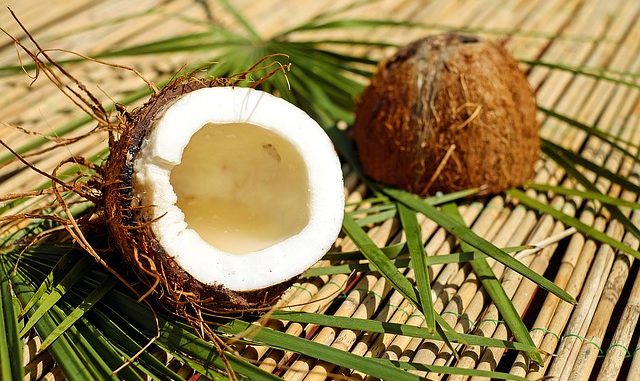
Coconuts continue to the grab the headlines mainly because they are extremely nutritious and provide us with a range of ingredients for cooking with. We not only have coconut oil and coconut milk but also coconut flour. The excitement over coconut flour is that it allows product developers to claim gluten-free, grain-free and keto-friendly claims.
The interest has been sparked by the rise of the ketogenic diet which has its faults and critics but which continues to gather pace as an alternative way of feeding ourselves. If you are strong adherents of the diet then any refined or whole wheat flours are out of the question and are replaced with coconut flour instead. It also means that with grains gone, the carbohydrate portion is drastically reduced and replaced with the appropriate substitutes of fibre and proteins also from coconut flour.
Cooking with coconut flour is not easy. Grain flours produce a better quality of product to be honest or at least one that we recognise. It is also considerably more expensive at the moment and is not readily available in either supermarket or grocery store. It can however be prepared in the home.
How Is Coconut Flour Obtained.
Coconut flour is a soft, fine-powdered ingredient which is prepared from dried coconut meat. It usually comes as a by-product of coconut milk production. Coconut meat is pressed to produce the milk leaving a mass from which the flour is prepared. Processors use low temperature heating to drive off the last difficult to remove droplets of moisture. Slow drying of the coconut meat is effective. It yields a coarse textured material which is ground to a powder.
Coconut flour is low in saturated fats but rich in fibre and proteins. This is a significant benefit because coconut oil is certainly not low in saturated fat and neither is the meat. That high saturated fat content makes the oil a more contentious product than many would like to think or really believe. The coconut flour is low in sodium and cholesterol so it offers some positive health benefits there too.
Preparing Coconut Flour
Preparing coconut flour couldn’t be simpler. All you need is one ripe coconut and a litre of good quality water. This method was suggested by our coconut supplier as their process of choice and is commonly employed by many in the kitchen.
- Drain the coconut water from a ripe coconut and keep for other uses.
- Crack the coconut with a drill or hammer and generate a series of pieces for easier handling.
- Take a kitchen knife and cut away the tender coconut meat. It is possible to use a regular vegetable peeler otherwise it would be a good idea to use knife-resistant gloves given the type of cutting needed.
- Chop the meat into small pieces suited to a food blender. Add 1 litre of water to the processor and blitz the meat to a pulp.
- Create a white paste like plaster of Paris and leave to settle,
- Put the paste into a muslin bag or cheesecloth over a large bowl. Squeeze to remove the coconut milk.
- Keep the residue in the bag and place in a lined baking tray containing parchment paper. Spread evenly.
- Bake the tray contents at a temperature in the oven less than 80 centigrade for 45 minutes or however long it takes to fully dehydrate the product.
- Remove the pulp and regrind in a food processor until a fine powder is produced.
The final product is a fine powder which can then be used as an ingredient.

Leave a Reply